Two ways to measure a trend in a cetacean population:One: Sample the whole geographical range of the population and calculate the size of the whole population. Repeat this at intervals and look for the trend across those population estimates. The well established and refined line-transect methods are used. These depend on making a sufficient number of sightings to estimate key values, particularly the fraction of animals that are missed even though they were close to the track line of the boat or plane.
The SCANS surveys in Europe is a classic example of this, carried out at approximately 10 year intervals. It is very expensive and very useful. Vaquita visual surveys have gone over the years from seeing enough animals to use the standard methods to much lower numbers and new methods have been developed to handle this.
Two: Sample a smaller set of sites, but do so in a more nearly continuous way, so that the trend in detections at that site can be measured … then statistically analyse the set of trends. This has been used far less because establishing a trend at many sites was onerous. Passsive acoustic monitoring has now made it feasible to collect very long data sets at much lower cost. Particular challenges include extimating redistribution effects and distinguishing species.
One: Sample the whole geographical range of the population and calculate the size of the whole population. Repeat this at intervals and look for the trend across those population estimates. The well established and refined line-transect methods are used. These depend on making a sufficient number of sightings to estimate key values, particularly the fraction of animals that are missed even though they were close to the track line of the boat or plane.
The SCANS surveys in Europe is a classic example of this, carried out at approximately 10 year intervals. It is very expensive and very useful. Vaquita visual surveys have gone over the years from seeing enough animals to use the standard methods to much lower numbers and new methods have been developed to handle this.
Two: Sample a smaller set of sites, but do so in a more nearly continuous way, so that the trend in detections at that site can be measured … then statistically analyse the set of trends. This has been used far less because establishing a trend at many sites was onerous. Passsive acoustic monitoring has now made it feasible to collect very long data sets at much lower cost. Particular challenges include extimating redistribution effects and distinguishing species.
Vaquita population
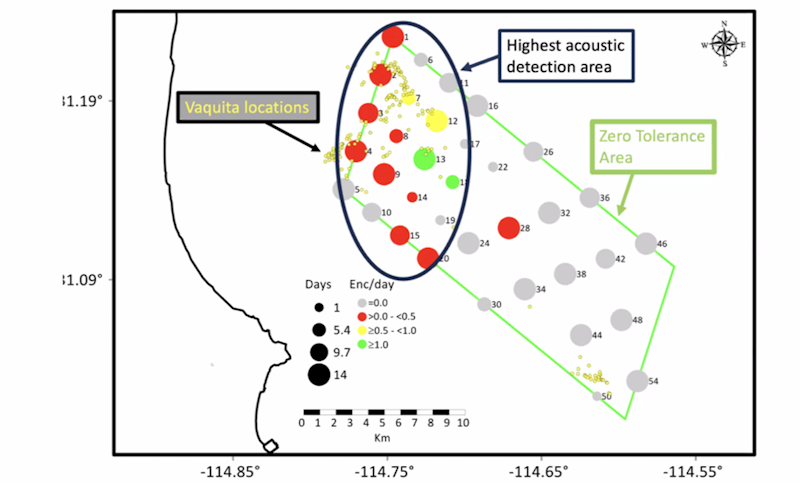
Armando Jaramillo demonstrated that there was strong downward trends in click rates at a wide sample of sites within the range of the Vaquita - an porpoise endemic to Mexico.
It has since been monitored with C-PODs and now now F-PODs arranged in a grid in the core conservation zone.
It has given very clear data even when the population is tiny and is able to show that their range extends outside the zone with zero-tolerance for the gillnetting that is killing them.
CATT
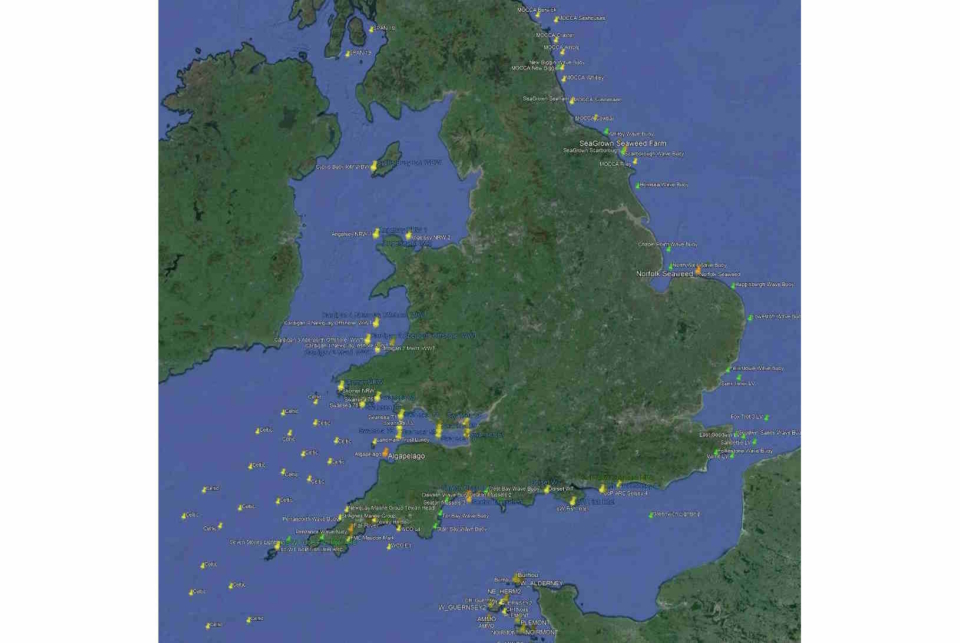
Cetacean Acoustic Trend Tracking is a research project addressing questions on what suitable low-cost long-term deployment opportuities for F-PODs may exist, what training and support is needed and what data issues, instrument losses etc etc may arise, and finally what the data is able to show.
Sites include seaweed farms, deployments by local wildflife groups, fish tracking stations and other academic projects which may gain added value from cetacean activity data.
BlackCeTrends
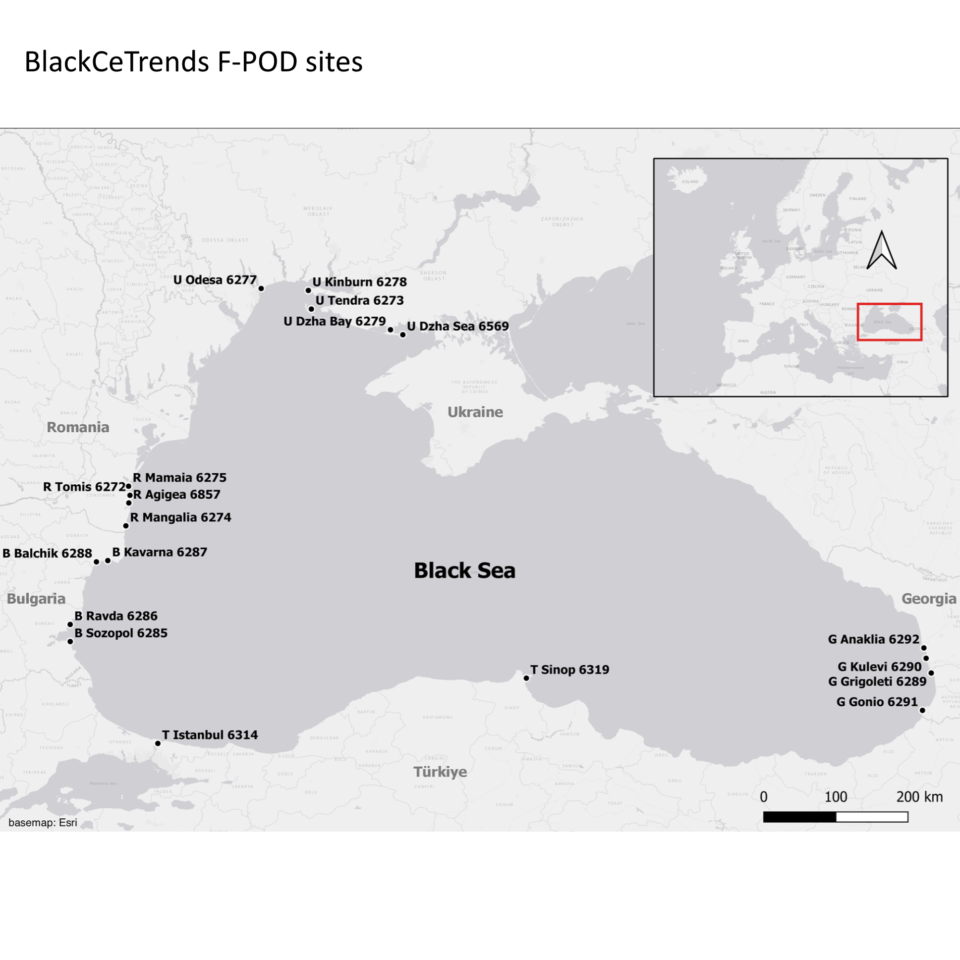
The BlackCeTrends project aims to sample the trend in the Black Sea's 3 endemic subspecies of cetacean.
Soon after its establishment it was hit by the Russian aggression in Ukraine but it is continuing.
It does not yet have a long enough timeline to determine trends but the data is the basis for one completed PhD on data quality and seasonal and diel patterns, and another that is in progress on click-based social activity.
ECOMMAS
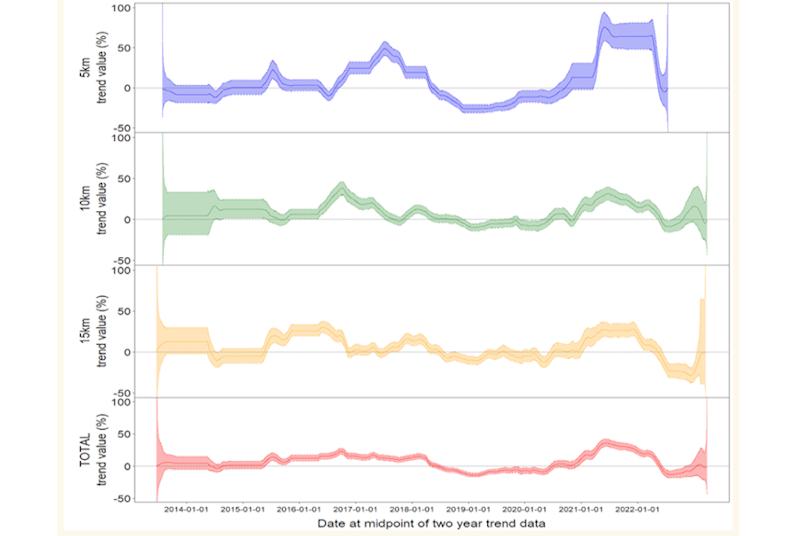
ECOMMAS is a pioneering study by Marine Scotland using C-POD loggers at 30 sites on the east coast of Scotland from 2013.
Here the year-on-year trends, over 10 years, in porpoise detections at 3 different distances offshore, 5, 10, 15km, and the average of all is shown.
PYRA
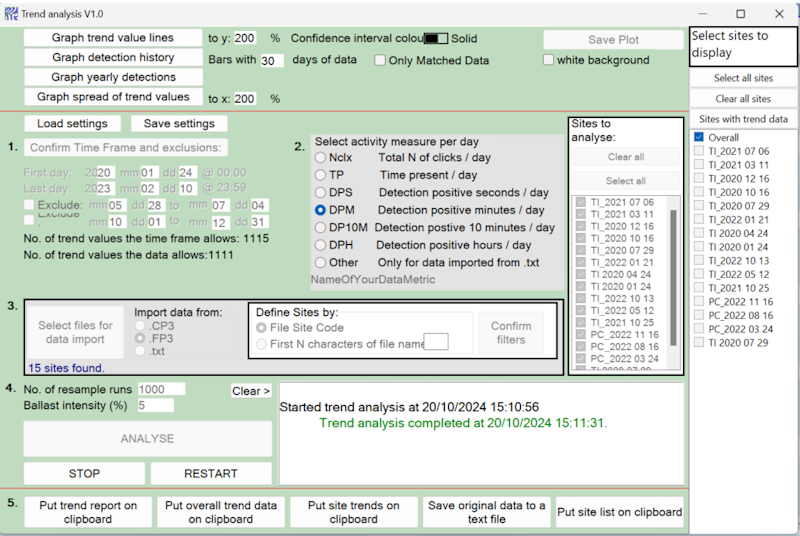
Cetacean data typically shows strong diel and seasonal patterns, and long series often have gaps that may be months long and distributed irregularly.
PYRA is an essentially simple robust method for determining trends in such data. It completely avoids any estimation of diel or seasonal patterns .
Multi-year POD data can be analysed using the utility in FPOD.exe, and is explained in this publication https://doi.org/10.1371/journal.pone.0264289
... and incidentally ...
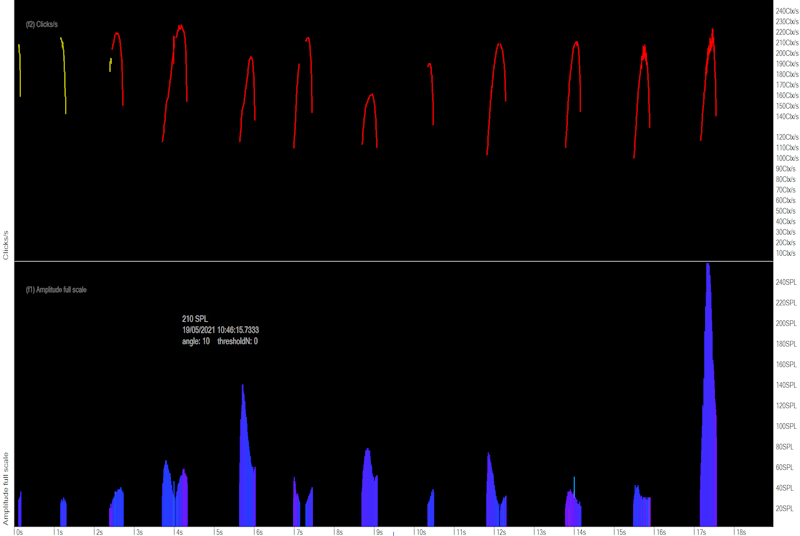
These are social calls from a porpoise in the Black Sea.
Trend monitoring studies collect a lot of data and within it are valuable data we have had little access to before. These include:
# click based social calls
# diel, tidal and seasonal patterns of cetacean activity
# noise pollution data, expecially from boat sonars
# fish tag transmissions - these can be decoded, but that is not yet automated.